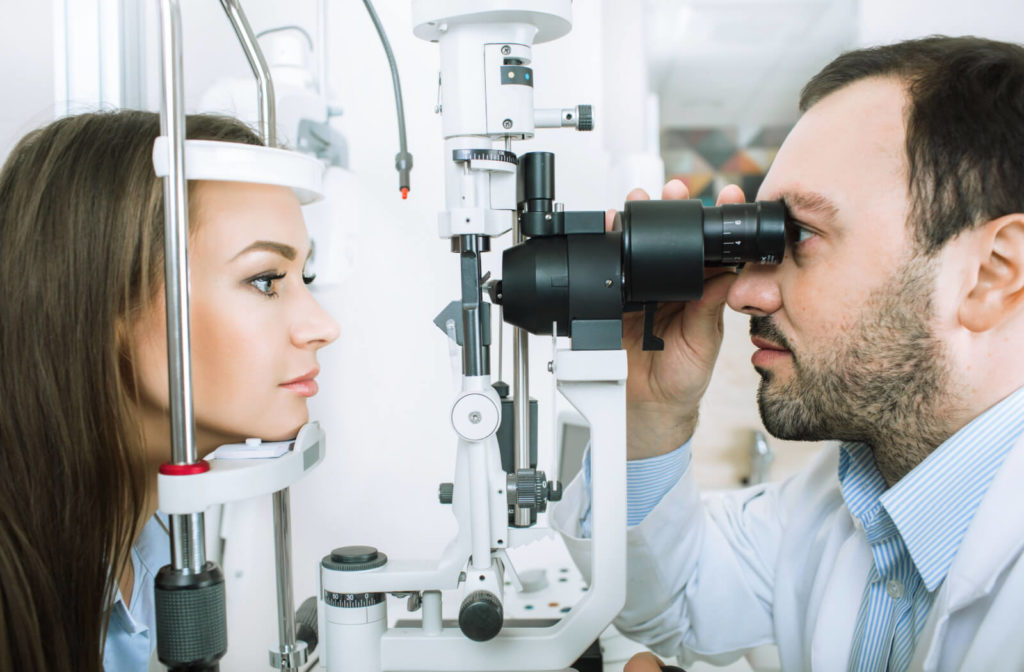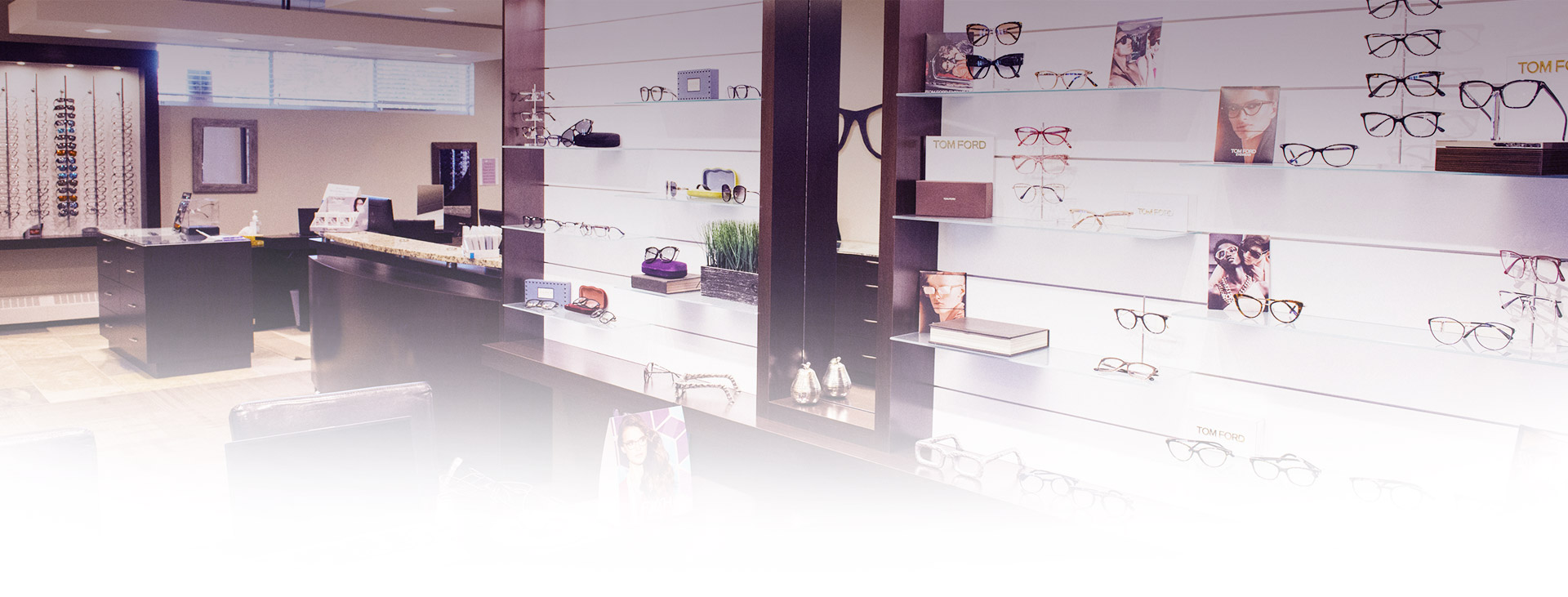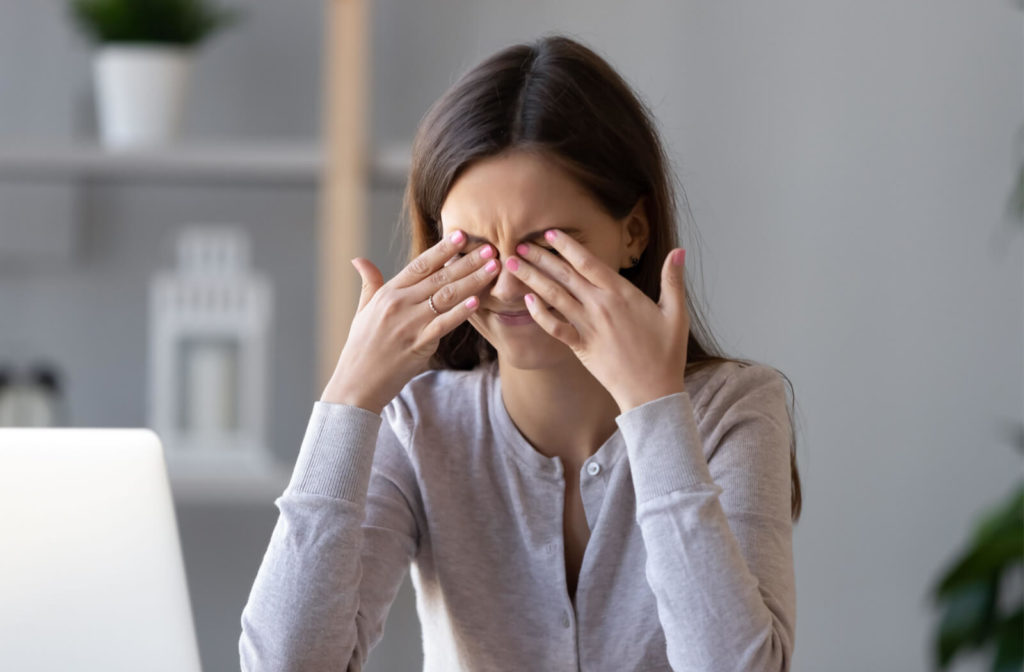Before putting on your sunglasses to protect your eyes, you may notice the sun or light off a nearby surface irritating your vision due to glare. You have also likely experienced halos near the lights in a dimly lit room.
Eye glare and halos can be a minor irritation or a sign of possible eye conditions like cataracts. Your eye doctor has treatments available to address the cause of your halos and can recommend ways to lower your risk of eye problems.
Eye glare and halos can be a common experience, and many patients may brush these symptoms off.
What Are Eye Glare & Halos?
Eye glare is a familiar issue, particularly for those who drive at night or spend time outdoors. Sunlight reflecting off surfaces such as wet pavement or sand can create a blinding glare, causing difficulty in focusing on objects. This common visual impairment arises from bright light reflecting off various surfaces. These reflections can significantly impact visual comfort, whether it’s sunlight bouncing off water or glare from computer screens.
Halos are rings surrounding lights and lit objects. You may notice a halo around a headlight while driving at night. While halos may be common for many, they can also be a symptom of a possible eye condition.
Both eye glare and halos can significantly disrupt daily activities and have several causes.
What Causes Eye Glare?
Eye glare typically occurs due to intense, direct light. As light enters the eye when looking at an object, it becomes a signal sent to the brain to become the images you see. Glare occurs when light becomes overwhelming, irritating your eyes and, for some, causing discomfort.
This intense light typically reflects off flat surfaces, like water, the hood of a car, snow, or your phone screen, and into your eye—making it difficult to see.
Glare sensitivity can be caused by some eye conditions, including:
- Cataracts: Clouding of the eye’s lens, making light seem more intense.
- Keratoconus: Thinning and bulging of the cornea, causing distorted vision and light sensitivity.
- Retinitis pigmentosa: An inherited disorder causing gradual vision loss and light sensitivity.
What Causes Halos?
Like eye glare, halos can be disruptive, especially at night. They can also be a sign of an eye problem, including:
- Cataracts: Like eye glare, cataracts can cause halos to appear around lights. If you receive cataract surgery, halos around lights can also occur as a side effect of your eye’s new lens.
- Fuchs’ dystrophy: Fuchs’ dystrophy is a corneal disease where the cells in the endothelium, the layer of cells covering your eye, die. The death of these cells causes fluid in the cornea to build up, causing swelling and puffiness.
- Glaucoma: Glaucoma is a group of eye diseases that damage your optic nerve, the part of the eye responsible for sending signals to your brain. Most forms of glaucoma don’t show symptoms until later in the disease, but acute angle-closure glaucoma can cause sudden and intense symptoms, including halos around lights.
- Keratoconus: Keratoconus is a condition where the cornea becomes progressively thinner, creating a cone-like shape. The cornea’s shape affects your vision, causing halos around lights.
- Photokeratitis: Your eyes can get sunburnt, which is known as photokeratitis. The sun’s UV rays temporarily hurt the corneas, leading to halos around lights and other symptoms.
- Dry eyes: Dry eyes occur when your tears can’t provide efficient hydration. Halos around lights occur when incoming light scatters as it hits the dry eye, typically at night.
- Astigmatism: Astigmatism is a common vision condition where the cornea or lens of the eye has an irregular shape, which can lead to blurred vision and the appearance of halos around lights.
How Can You Treat These Conditions?
The causes of glare and halos are treatable with the help of your eye doctor:
- Cataracts: Cataracts progress with time, and stronger corrective lenses can provide clearer vision. As the condition worsens, you may require cataract surgery.
- Fuchs’ dystrophy: Fuchs’ dystrophy is treatable with surgery to replace the cornea’s inner layer. Sometimes, a corneal transplant is required.
- Glaucoma: Many treatments are available for glaucoma, including laser treatment, medication, and surgery to reduce eye pressure.
- Keratoconus: Keratoconus can be managed with specialized contact lenses.
- Photokeratitis: Sunburnt eyes typically improve with time, but you can reduce your symptoms with a cold compress and over-the-counter pain relievers.
- Dry eyes: Dry eyes can have many causes, and your eye doctor can recommend a customized treatment plan after assessing the root cause of your symptoms. They may recommend prescription medications, in-office treatments, or at-home products.
- Astigmatism: Astigmatism is typically corrected through the use of eyeglasses or contact lenses. In some cases, refractive surgery, such as LASIK, may be recommended to reshape the cornea and address astigmatism.
How Can You Prevent Eye Glare & Halos?
While you can’t always prevent glare and halos, you can consciously protect your long-term eye health.
A healthy diet and exercise benefit your eyes and general health. Additionally, investing in sunglasses is essential for reducing glare while outside—wear them anytime you go out or drive during the day, even if it’s cloudy.
One of the most important things you can do for your eye health and vision is to book regular eye exams. Your eye doctor can assess your vision and help identify eye problems as early as possible.

Don’t Brush Glare & Halos Aside
While glare and halos may not indicate an issue, they’re worth being cautious about. Watch your symptoms and contact your eye doctor if you suddenly start seeing halos or see them alongside other signs of an eye problem. Your optometrist is here to help protect your eye health and vision.
Contact us at Visionary Eye Centre if you experience sudden or intense eye glare or halos around lights.



